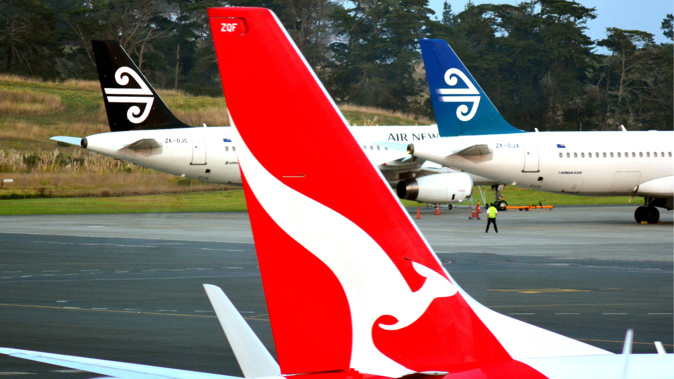
The New Zealand and Australian governments should start planning now for a transtasman travel "bubble", even if it's months before it can safely be put into action, says Auckland International Airport chief executive Adrian Littlewood.
If both countries maintain current, apparent success in containing the spread of the Covid-19 virus within their own borders, the opportunity to open borders to one another would be a major boost to one another's deeply battered tourism sectors, said Littlewood, who chaired the influential Australia-New Zealand Leadership Forum until December last year.
"If we are going to start anywhere first [in opening borders], it's going to be with Australia," he told BusinessDesk. However, systems to deal with Covid-19 risks and public acceptance that such a reopening was safe and possible would be required first.
Some 54 per cent of all international travel to and from New Zealand had an Australian connection last year, and travel involving friends and family accounted for half of transtasman trips.
Littlewood's comments coincide with the Australian federal tourism minister, Simon Birmingham, predicting that Australia's ban on international travel will likely continue until the end of the year, but with potential to ease restrictions on travel between the Australian states and that there "might be a little bit to New Zealand".
"It's very difficult to predict and nobody should be getting ahead of themselves at present," Birmingham was reported as saying.
Littlewood agreed that the timing of any reduction in transtasman border restrictions was "unknown".
"But the fact our two countries seem to be performing well and consistently [in tackling Covid-19]) helps," he said, along with the fact that transtasman Single Economic Market arrangement ensures that citizens of both countries can be cared for in one another's health systems - a key consideration in reopening the travel insurance market.
"Those things mean that the conditions for figuring out what a restart looks like for those markets, we have them in place already. We need to test and trial those mechanisms across the Tasman, even if it's state by state for a start."
Auckland Airport has been hit hard by the collapse in both domestic and international air traffic since Covid-19 restrictions effectively ended all but international freight flights and essential travel services. Airways Corp figures show that in the first week of April, aircraft movements in New Zealand were down by 85 per cent compared to the same time a year earlier.
The airport has suspended earnings guidance and put major capital works on hold.
The International Air Transport Association is predicting as many as 128,000 jobs related to the aviation sector may be lost in New Zealand, with Air New Zealand already announcing redundancies for more than 1800 pilots and cabin crew and Virgin Australia closing its New Zealand operations, which employed around 600 people.
Littlewood said Australians made around 8 million international trips last year and New Zealanders nearly 3 million.
"Even getting a portion of that could put some fuel into the international tourism machine," he said, stressing that "every sector's plan has to start with health: getting tracing right; and broad and fast testing procedures" with agreed processes at the points of both departure and arrival.
Newly created electronic visas could be repurposed or expanded to include information about vaccination and whether a traveller has been tested for Covid-19 antibodies.
The governments and the aviation and tourism industries in both countries should take the opportunity to start planning now for processes that would meet the requirement for public acceptance.
"People are anxious about inbound arrivals," he said. "That's very understandable. But at some stage, we need to look at what a return [to open international borders] looks like. We need to start now."
Take your Radio, Podcasts and Music with you









